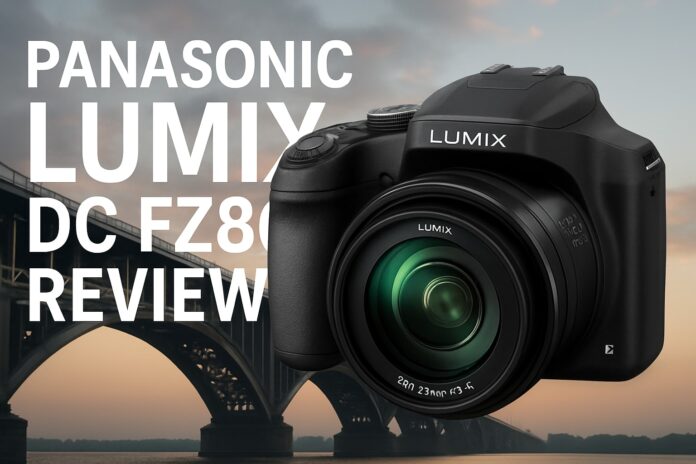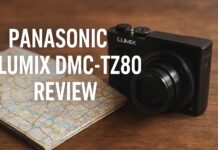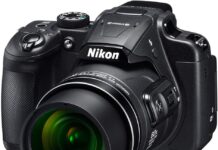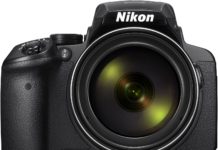Bridge cameras continue to impress in 2025, and the Panasonic Lumix DC FZ80 is a standout for both beginners and seasoned photographers. Its blend of reach, versatility, and user friendly design keeps it at the top of many wish lists. This panasonic lumix dc fz80 review delivers a fresh, in-depth look at the camera’s core specs, real world image and video quality, hands on performance, and how it stacks up against the latest competition. If you are wondering whether this camera fits your needs this year, read on for insights and practical advice from a photographer’s perspective.
Contents
Panasonic Lumix DC FZ80: Core Features and Design
The Panasonic Lumix DC FZ80 continues to stand out as a top choice for photographers who want a single camera that can handle almost any shooting scenario. In this section of the panasonic lumix dc fz80 review, I will break down what makes the FZ80 such a compelling bridge camera in 2025, from its core specifications to its real-world usability for travel, family, and creative pursuits.

Overview of the FZ80 as a Bridge Camera
Bridge cameras fill the gap between compact point-and-shoots and the more advanced world of mirrorless or DSLR systems. The panasonic lumix dc fz80 review consistently highlights how this model offers the best of both worlds: powerful zoom, DSLR-style ergonomics, and ease of use.
In 2025, the FZ80 remains a go-to for travelers, hobbyists, and families who need versatility without the hassle of carrying extra lenses. Its 60x optical zoom is a major draw, letting you capture distant wildlife or wide landscapes with one device. If you are trying to decide which zoom camera best fits your needs, the Best Zoom Cameras Compared guide puts the FZ80’s strengths in context against other top contenders.
What keeps the FZ80 popular this year is its value for money. For many, it’s an ideal step up from a smartphone, offering manual controls and creative options while staying approachable for beginners.
Key Specifications and Build Quality
The panasonic lumix dc fz80 review would not be complete without a close look at its hardware. The camera packs an 18.1MP 1/2.3-inch sensor, which balances detail and portability. The standout feature remains the DC Vario lens, boasting a 60x optical zoom (20-1200mm equivalent) and an f/2.8-5.9 aperture range. This range lets you go from sweeping vistas to close-ups of wildlife without changing gear.
Power O.I.S. (Optical Image Stabilization) is essential, especially at full zoom, and the FZ80 delivers reliable stabilization for both photos and video. With its lightweight build and comfortable hand grip, the FZ80 is easy to carry all day, a point often praised in any panasonic lumix dc fz80 review.
The rear LCD touchscreen is bright and responsive, while the electronic viewfinder provides a clear alternative in strong sunlight. Battery life is solid for a bridge camera, and the FZ80 supports UHS Class 3 SD cards, ensuring smooth 4K video capture.
Here is a quick spec summary:
| Feature | Detail |
|---|---|
| Sensor | 18.1MP 1/2.3-inch |
| Zoom | 60x optical (20-1200mm eq.) |
| Aperture | f/2.8-5.9 |
| Stabilization | Power O.I.S. |
| Screen | 3.0-inch LCD touchscreen |
| Viewfinder | Electronic (EVF) |
| Weight | Approx. 616g (with battery) |
| Card Support | SD, SDHC, SDXC (UHS-3) |
Controls, Menus, and Customization
One thing I appreciate in the panasonic lumix dc fz80 review is how the controls are laid out for intuitive operation. The camera features a well-designed button and dial arrangement, making it simple for both new and experienced users to access essential functions.
Customizable function buttons allow you to tailor the camera to your shooting style. For example, I like assigning my most-used settings, such as ISO or white balance, to these buttons for quicker access. The touchscreen interface is user-friendly, letting you tap through menus or set focus points with minimal fuss.
Panasonic’s menu system is clear and organized, which means you spend less time hunting for settings and more time shooting. Beginners will find the guided menus helpful, while advanced users can dive deeper into the customization options.
Durability and Portability
Durability is a crucial factor in any panasonic lumix dc fz80 review, especially for travelers and families. The FZ80 is primarily constructed from high-quality plastic, keeping it lightweight yet sturdy enough to withstand daily use. While it does not feature full weather sealing, I have found it handles most outdoor conditions well, provided you avoid heavy rain or extreme dust.
Portability is another strong suit. The camera’s compact size and well-designed grip make it easy to slip into a backpack or carry on a hike. Whether you are heading out for a family picnic or exploring a new city, the FZ80 is a reliable companion.
Real-world experience shows the FZ80 stands up to the bumps and jostles of travel. It is not indestructible, but with reasonable care, it should serve you well for years of adventure and everyday moments.
Image Quality and Performance in 2025
The Panasonic Lumix DC FZ80 continues to impress in 2025 with its blend of versatility and accessible performance. As a photographer who enjoys both the technical and creative sides of the craft, I have seen how this camera meets real-world needs for diverse shooting situations. The panasonic lumix dc fz80 review often centers on its strengths as an all-in-one solution, and for good reason.

Still Photography: Sensor Performance and Output
Starting with sensor performance, the FZ80’s 18.1MP 1/2.3-inch sensor delivers detailed images that hold up well through the majority of its zoom range. In bright daylight, I have found the resolution and sharpness to be more than adequate for large prints or digital sharing. Color rendering is pleasing, with natural skin tones and vibrant landscapes.
Where the panasonic lumix dc fz80 review gets interesting is in low-light scenarios. At higher ISOs (above 800), noise becomes noticeable, especially in shadow areas. While this is expected for a sensor of this size, the FZ80 still manages usable results for casual shooting in dim light. The dynamic range is respectable, allowing recovery of highlights and shadows in RAW files, which is a step up from the older FZ70.
JPEG output is optimized for quick sharing, but I recommend shooting RAW if you plan to edit your photos. Compared to competitors in 2025, the FZ80 keeps pace in daylight conditions, though larger-sensor rivals offer better results after dark. Here’s a quick comparison:
| Model | Sensor Size | MP | ISO Range | 4K Photo | Dynamic Range |
|---|---|---|---|---|---|
| Panasonic FZ80 | 1/2.3-inch | 18.1 | 80-3200 | Yes | Good |
| Canon SX70 HS | 1/2.3-inch | 20.3 | 100-3200 | No | Fair |
| Sony HX400V | 1/2.3-inch | 20.4 | 80-3200 | No | Fair |
In summary, the panasonic lumix dc fz80 review reveals a camera that is reliable for everyday photography, with image quality that satisfies most users in good light.
Lens Versatility and Optical Quality
The lens is truly the heart of any panasonic lumix dc fz80 review, and the FZ80’s 60x optical zoom (20-1200mm equivalent) is a standout feature. This range covers everything from wide landscapes to distant wildlife—without changing lenses. I have captured sweeping vistas at 20mm and then zoomed in on distant birds at 1200mm, all in a matter of seconds.
Optical quality is impressive for this class. At the wide end, images are sharp with minimal distortion. As you reach the telephoto extremes, some softness and chromatic aberration can occur at the edges, but the center remains detailed. Panasonic’s Power O.I.S. stabilization is crucial here, making handheld shots at full zoom possible for travel and wildlife.
For those who travel frequently or want a single camera for all occasions, the FZ80’s versatility is a game changer. If you are considering the best camera for your next adventure, I recommend browsing the Best Travel Camera Picks to see how the FZ80 compares with other top choices in 2025.
In practical terms, this zoom range means you can shoot a sunrise landscape, capture a candid portrait, and then photograph distant action—all with one device. This is a major reason the panasonic lumix dc fz80 review remains highly positive among travelers and families.
Autofocus and Shooting Speed
Autofocus performance is a critical part of any panasonic lumix dc fz80 review. The FZ80 uses contrast-detect AF, which is quick and accurate in most daylight scenarios. Face and subject tracking is reliable, especially for portraits or moving children. When photographing wildlife or sports, I found the camera’s burst mode—up to 10 frames per second—helpful for nailing the perfect moment.
Here are some practical AF features:
- Face and eye detection for portraits
- Subject tracking for moving objects
- Focus bracketing for creative depth-of-field control
Focus stacking is another advanced feature, letting you combine multiple images for greater depth of field in macro or landscape shots. While burst shooting is not as fast as high-end mirrorless models, it is more than enough for family events or casual action photography.
Overall, the panasonic lumix dc fz80 review highlights a camera that can keep up with daily life, even if it is not a speed demon like professional cameras. The controls are intuitive, and most users will find the AF system meets their needs for general photography in 2025.
4K Photo Modes and Creative Options
One area where the panasonic lumix dc fz80 review truly shines is in its 4K Photo modes. These features unlock creative possibilities that are rare at this price point. Using 4K Photo, you can capture 30 frames per second bursts and extract the exact moment you want as an 8MP still. This is perfect for group shots, pets, or capturing fleeting expressions.
Post Focus and Focus Stacking allow you to fine-tune focus after the shot. I have used these modes to ensure every face is sharp in group photos or to create artistic images with extended depth of field.
The flexibility of these creative tools, combined with the camera’s core performance, makes the FZ80 a smart choice for those who want to explore new photographic techniques without investing in a more complex system. The panasonic lumix dc fz80 review confirms that, even in 2025, this camera remains a top pick for creativity and value.
Video Capabilities: 4K and Beyond
The video features of the Panasonic Lumix DC FZ80 have always drawn attention from enthusiasts and casual shooters alike. In the panasonic lumix dc fz80 review landscape for 2025, this camera stands out for its blend of 4K capabilities and user-friendly tools. For those eager to capture high-resolution memories or experiment with creative techniques, video is a central part of the FZ80’s appeal.
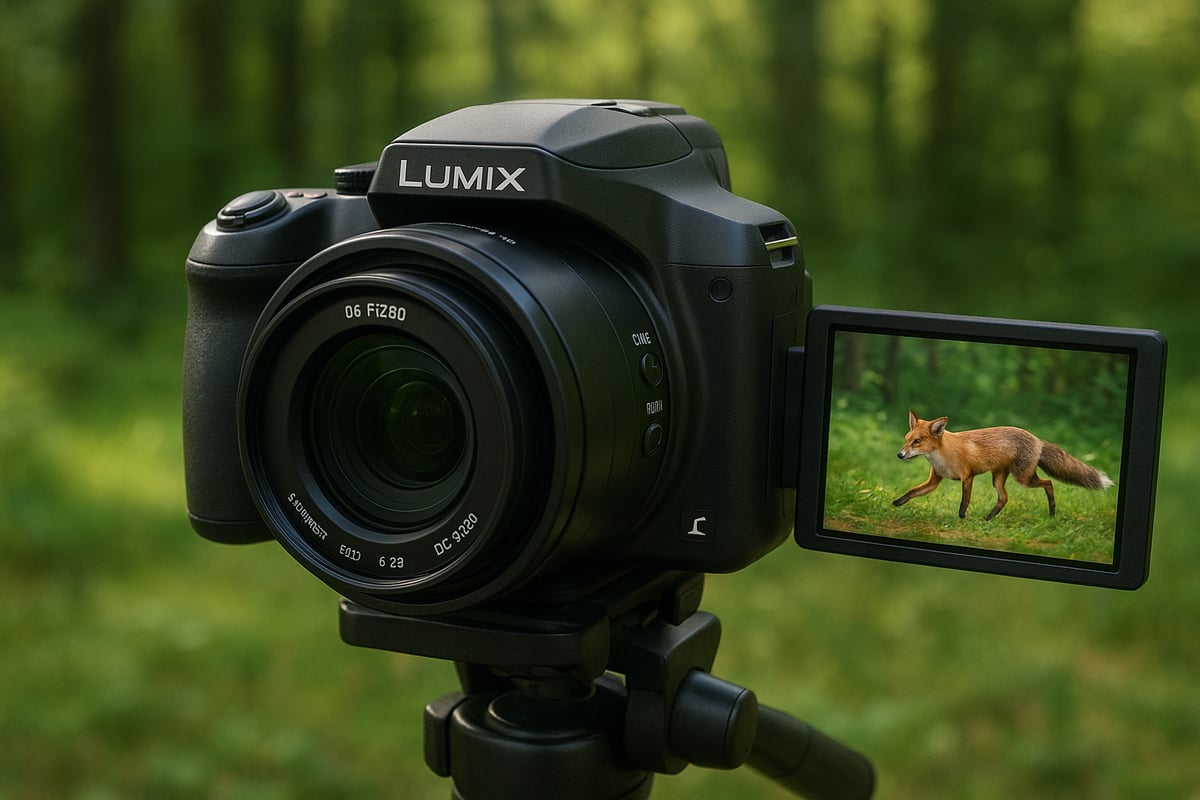
4K and Full HD Video Quality
When it comes to resolution, the FZ80 records 4K video at 30p with impressive sharpness for its class. The panasonic lumix dc fz80 review consistently highlights the 1.1x crop factor in 4K mode, which is something to keep in mind for wide shots. Rolling shutter is present if you pan quickly, but for most casual shooting it remains manageable.
Full HD recording is offered up to 60p, providing smooth footage and slow-motion flexibility. Audio is captured through a built-in stereo microphone, but the lack of an external mic input limits advanced audio setups. For best results with 4K, a fast SD card is crucial; I recommend checking out the Best Memory Cards for 4K Video to avoid dropped frames or recording interruptions.
| Setting | Resolution | Frame Rate | Audio |
|---|---|---|---|
| 4K Ultra HD | 3840×2160 | 30p | Stereo |
| Full HD | 1920×1080 | 60p/30p | Stereo |
Video Autofocus and Stabilization
Reliable autofocus is essential for video, and the panasonic lumix dc fz80 review shows the FZ80’s contrast-detect AF system does a respectable job. In good light, focus transitions are smooth, though tracking fast-moving subjects can be slower than on higher-end models. Continuous autofocus is best for family events or travel vlogs where the scene changes often.
Stabilization is handled by Panasonic’s Power O.I.S., which works well for handheld shooting, especially at moderate zoom levels. For best results at the long end of the zoom, I recommend bracing your elbows or using a tripod. These small habits can make a major difference for steady footage, and help you get the most from the FZ80’s video potential.
4K Photo for Videographers and Content Creators
One of the most creative aspects highlighted in any panasonic lumix dc fz80 review is the 4K Photo mode. This feature allows you to capture 30 frames per second and extract 8MP stills from your video, which is perfect for those unpredictable moments—think birds taking flight or kids mid-jump.
For content creators, this mode is a real asset. It lets you pull sharp images from video, simplifying your workflow for social media or family albums. The FZ80’s 4K Photo is especially useful for travel vlogs, wildlife scenes, or group shots where timing is everything. With a bit of practice, you can anticipate action and reliably capture the decisive moment.
Limitations and Workarounds
No panasonic lumix dc fz80 review would be complete without acknowledging its video limitations. The absence of an external mic jack or headphone port restricts audio monitoring and quality for serious videographers. Manual controls for video are not as robust as those found on higher-tier models, which can limit creative flexibility.
Battery life is another consideration. Shooting 4K video drains power faster than stills, so it’s wise to carry a spare battery for extended sessions. With thoughtful planning and the right accessories, many of these hurdles can be managed. For most users, the FZ80 still delivers a compelling video experience for its price and convenience.
Real-World Usability and User Experience
Getting hands-on with the Panasonic Lumix DC FZ80 is where its appeal truly shines. For those seeking a practical camera that feels intuitive from the first grip, this model continues to earn praise in the panasonic lumix dc fz80 review landscape. Whether you are new to photography or coming from a more advanced setup, real-world usability is the heart of what makes the FZ80 a lasting favorite.

Handling and Ergonomics in Daily Use
The first thing you notice when picking up the FZ80 is its lightweight build. The sculpted grip provides a secure hold, even for extended periods, which is vital on long outings or travel days. Buttons are logically placed and easy to reach, so you rarely need to shift your hand to change settings.
The LCD touchscreen responds quickly, making it simple to navigate menus or review shots. The electronic viewfinder is crisp and remains usable in both direct sunlight and low light, a detail that many panasonic lumix dc fz80 review writers highlight as a practical advantage over smartphones.
For beginners, the learning curve feels gentle. The menu system offers helpful explanations, and custom function buttons allow users to tailor the camera to their style. Even experienced photographers will appreciate the quick access to exposure controls and scene modes.
Connectivity and Sharing Options
In 2025, seamless connectivity is a must. The FZ80’s built-in Wi-Fi makes sharing photos fast and straightforward. Pairing with Panasonic’s mobile app lets you transfer images instantly to your smartphone or tablet, so posting to social media or backing up your shots is effortless.
Remote shooting via the app is a real asset, especially for group portraits or wildlife photography where you want to avoid disturbing your subject. Compatibility with the latest devices ensures that the panasonic lumix dc fz80 review remains relevant for modern workflows.
This camera bridges the gap between traditional photography and today’s connected lifestyle, making it a solid companion for families and travelers alike.
Battery Life and Storage
A full day of shooting is well within reach on a single battery. In typical conditions, expect around 300 shots or about 45 minutes of continuous 4K video on one charge. This performance is competitive among bridge cameras and is often cited in panasonic lumix dc fz80 review feedback from users.
For those planning to shoot 4K video or bursts, a UHS Class 3 SD card is essential. Faster cards help prevent buffer delays and ensure smooth recording. I recommend carrying a spare battery and an extra card, especially for travel or event days. With these, you will rarely miss a shot due to power or storage limitations.
Maintenance and Longevity
Cleaning the lens and sensor is straightforward, thanks to the camera’s accessible design. A simple blower and microfiber cloth handle most dust and smudges. The robust plastic body withstands daily knocks, making the FZ80 a reliable companion for years of use.
Firmware updates from Panasonic continue to improve performance and fix minor bugs, which is a reassuring sign of long-term support. If you want a deeper dive into real-world durability and ongoing user experience, check out the Panasonic Lumix FZ80D In-Depth Review for further insights.
Overall, the panasonic lumix dc fz80 review consensus is that this camera stands up well to frequent use, offering both reliability and flexibility for a range of photography needs.
Panasonic Lumix DC FZ80 vs. the Competition in 2025
Choosing the right bridge camera in 2025 is not a simple task, especially with so many strong contenders. As someone who has spent countless days in the field, I can confidently say the panasonic lumix dc fz80 review stands out for its balance of features, performance, and value. Let us break down how it fares against its key rivals and help you decide if it still deserves a spot in your camera bag.
Key Rivals: Canon, Sony, Nikon, and Others
When stacking up the panasonic lumix dc fz80 review against direct competitors, several models stand out. The Canon SX70 HS, Nikon P950, and Sony HX400V all attract similar buyers, but each brings its own flavor to the table.
Here is a quick comparison:
| Model | Optical Zoom | Sensor Size | 4K Video | Price (2025) | Weight |
|---|---|---|---|---|---|
| Panasonic FZ80 | 60x | 1/2.3-inch | Yes | Low | Light |
| Canon SX70 HS | 65x | 1/2.3-inch | Yes | Higher | Moderate |
| Nikon P950 | 83x | 1/2.3-inch | Yes | Highest | Heaviest |
| Sony HX400V | 50x | 1/2.3-inch | No | Moderate | Moderate |
The FZ80 wins on affordability and portability, while giving up some zoom range to the Nikon. For those interested in a deeper look at the FZ80’s latest version, the Panasonic Lumix FZ80D Review 2025 covers all major improvements and hands-on impressions.
Upgrades Over Previous Models and Alternatives
Compared to its predecessor, the FZ70, the panasonic lumix dc fz80 review brings a significant bump in sensor resolution, 4K video, and a more intuitive touchscreen interface. These upgrades make a real difference in everyday use, especially for those who want quick access to creative modes and faster sharing.
The trade-off comes in sensor size. While rivals like the Nikon P950 offer longer zoom, they also bring more weight. If you are after a travel-friendly option that is easy to learn but still powerful, the FZ80 remains a compelling pick. It is not just about specs on paper, but how the camera feels in hand and performs in the real world.
Who Should Buy the FZ80 vs. Alternatives?
The panasonic lumix dc fz80 review is best suited for travelers, families, and hobbyists who want an all-in-one solution without carrying extra lenses. If you shoot wildlife, sports, or landscapes, the 60x zoom and stabilization are hard to beat at this price.
On the other hand, those who want more manual controls or superior low-light performance might consider stepping up to a mirrorless or entry-level DSLR. If budget is a concern, the FZ80 is a smart compromise. It is also a great stepping stone for beginners moving beyond smartphones into creative photography.
Market Trends and Future-Proofing
Bridge cameras like the FZ80 continue to hold a unique spot in a smartphone-dominated world. The panasonic lumix dc fz80 review shows that dedicated zoom and tactile controls still appeal to photographers who value flexibility. While smartphones are catching up in computational photography, they simply cannot match the reach or handling of a superzoom bridge camera.
For those comparing within the Lumix range, the Panasonic Lumix Camera Comparison 2025 provides a comprehensive overview of how the FZ80 stacks up against newer Panasonic models. Feedback in 2025 remains positive, especially regarding the FZ80’s longevity and continued firmware support. If you want a camera that will serve reliably for years, the FZ80’s proven track record and affordable price make it a future-proof investment.
Who Should Buy the Panasonic Lumix DC FZ80 in 2025?
Selecting the right camera in 2025 can feel overwhelming, but the panasonic lumix dc fz80 review consistently highlights its unique appeal for a broad range of photographers. In this section, I will break down who will benefit most from this bridge camera, what to expect in real-world use, and how it stacks up for value and longevity.
Ideal Use Cases and User Profiles
The panasonic lumix dc fz80 review continues to impress those looking for a camera that bridges the gap between smartphones and interchangeable lens systems. Beginners upgrading from phones will appreciate its intuitive controls and massive zoom. Travelers find the FZ80’s all-in-one design perfect for packing light while still capturing distant wildlife or sweeping vistas.
Families benefit from its ease of use and versatility, making it ideal for events, holidays, or kids’ sports. Hobbyists interested in wildlife, sports, or creative photography also find the FZ80’s feature set compelling. For a deeper dive into user experiences and sample photos, the Panasonic Lumix FZ80D Review 2025 offers practical insights into its real-world performance.
Pros and Cons for Different Photographers
Every panasonic lumix dc fz80 review reveals both strengths and trade-offs. Here is what stands out:
- Strengths:
- Huge 60x zoom enables wildlife and distant sports shots.
- User-friendly menus and controls suit beginners.
- 4K photo and video modes add creative options.
- Lightweight build makes it easy to carry all day.
- Weaknesses:
- Smaller sensor limits low light performance.
- Limited manual video controls may frustrate advanced users.
- No external mic input for serious videography.
For most casual shooters, the advantages outweigh the drawbacks, especially when ease of use and zoom range are top priorities.
Alternatives to Consider
While the panasonic lumix dc fz80 review shows it is a standout in its class, some may want to explore alternatives. If you prioritize compactness, a high-end point-and-shoot could fit better. Those craving more manual controls or better low-light results might consider entry-level mirrorless or DSLR cameras.
Landscape photographers, in particular, may want to explore options from the 10 Best Cameras for Landscape Photography roundup, which includes models with larger sensors and enhanced dynamic range. Always weigh your needs for portability, zoom, and creative flexibility before making a decision.
Value for Money and Longevity
The panasonic lumix dc fz80 review consistently highlights its excellent value. In 2025, the FZ80 remains competitively priced, making it an accessible upgrade from a smartphone or older bridge camera. Its robust build and reliable performance promise several years of use, while Panasonic’s ongoing firmware support adds peace of mind.
The FZ80 holds its resale value well, and user reports confirm it withstands frequent travel and everyday adventures. If you seek a camera that offers both versatility and affordability without sacrificing essential features, the FZ80 is a smart buy for the year ahead.


